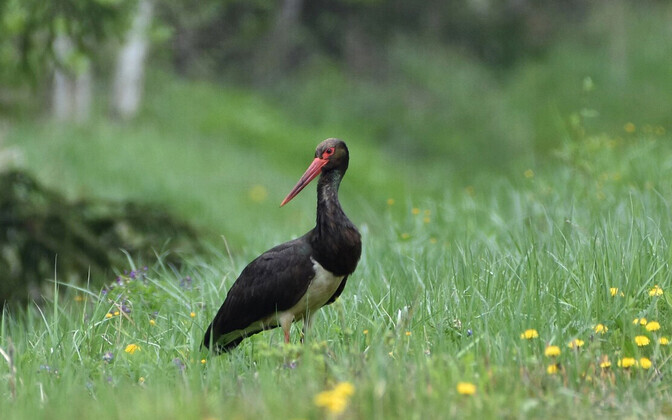A rare black stork which had been breeding in Estonia and had a tracking device placed here fell victim to a suspected firearms injury in Germany, Maaleht reported.
Somewhat smaller than the more familiar white stork to which it is related, black storks are also far shyer of humans, preferring to nest in out-of-the-way forests and bogs.
As the name suggests, the bird’s plumage is predominantly black with a greenish and coppery metallic sheen and with a white underside and distinctively red legs, bill, throat, and area around the eyes.
The species migrates every autumn from Estonia to more southerly climes, mostly in Africa, covering thousands of kilometers in the process, and was in transit over Germany when the incident happened.
However, migration and over-wintering are more hazardous for the species than breeding time – in the latter case, much of the population ends up in areas where they are under partial or full protection, whereas in winter the birds are mostly found in countries where they are not protected, and can even be hunted.
Germany is not among this latter group of countries, though, since harming a black stork would be a highly serious violation under federal law, which is what makes the case all the more poignant.
Maaleht, citing the Looduskalender, said the bird’s migration was also being tracked by ornithologists here in Estonia, and may have been “Tootsi,” whose activities could be followed from the Kergu nature camera.
Unfortunately, police in Greifswald, Mecklenburg-Vorpommern, received a report of a dead stork last Friday, with the body handed in to the local zoo, where the tracking device, originating in Estonia, was found.
Preliminary investigations revealed injuries consistent with gunshot wounds, as noted, something which contravenes Germany’s federal nature conservation law.
The black stork belongs to the first category of protected species and is listed in the Estonian “Red Book” as a vulnerable species, and its summer breeding population in Estonia is estimated at 40–60 pairs, down from 120–150 pairs some years ago.
The black stork also differs from the white in being able to make a call as well as clattering its bill – the white variety is mute and can only perform the latter action, as those who have lived in the vicinity of the much more gregarious nesting white storks will be well aware.
Estonia represents the northernmost extent of the breeding range of both species; these birds are only occasionally spotted in Finland.
—
